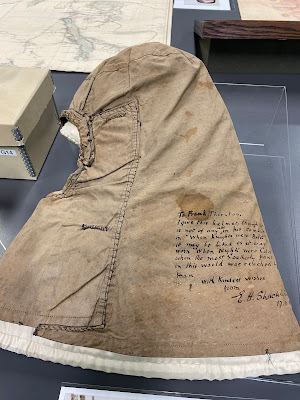 |
| Stanley's and Livingstone's hats |
 |
| An illustration of the famous meeting |
 |
| Shackleton drew a map on a menu |
 |
| Shackleton's balaclava |
 |
| Stanley's and Livingstone's hats |
 |
| An illustration of the famous meeting |
 |
| Shackleton drew a map on a menu |
 |
| Shackleton's balaclava |
Very envious that you got to go to the Royal Geographic Society Library. Suspect I might be happy spending the rest of my life in there! We loved The Museum of London too.
ReplyDeleteI hope you won't be offended if I ask you to please never come home! I look forward to reading your wonderful daily reports and I savor each one! Thank you very much for taking us along on your library adventure!
ReplyDeleteHa! It is very tempting to stay but London rents are even worse than NYC where I used to live! Several times our host librarians were late because their long commutes into the city got delayed and it is obvious they cannot afford to live closer. Although one guy told me the new Elizabeth train line was going to cut 20-30 minutes off his commute. In good weather, he rides his bicycle but I have never understood why someone would want to be hot and sweaty all day.
ReplyDeleteOh, is the Great Fire of London exhibit still the diorama that lights up as someone reads from Pepys' Diary? I remember he says "I slipped on my underclothes" which always made me giggle, even though I last saw it as a teen. It's probably fancier now.
ReplyDelete